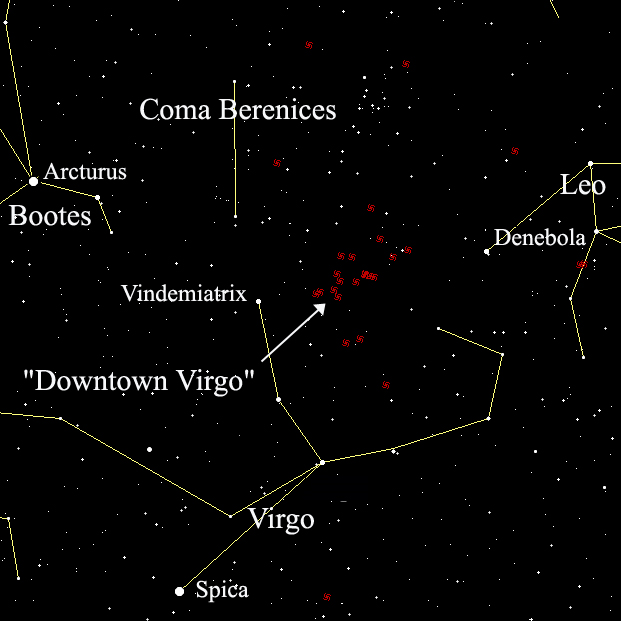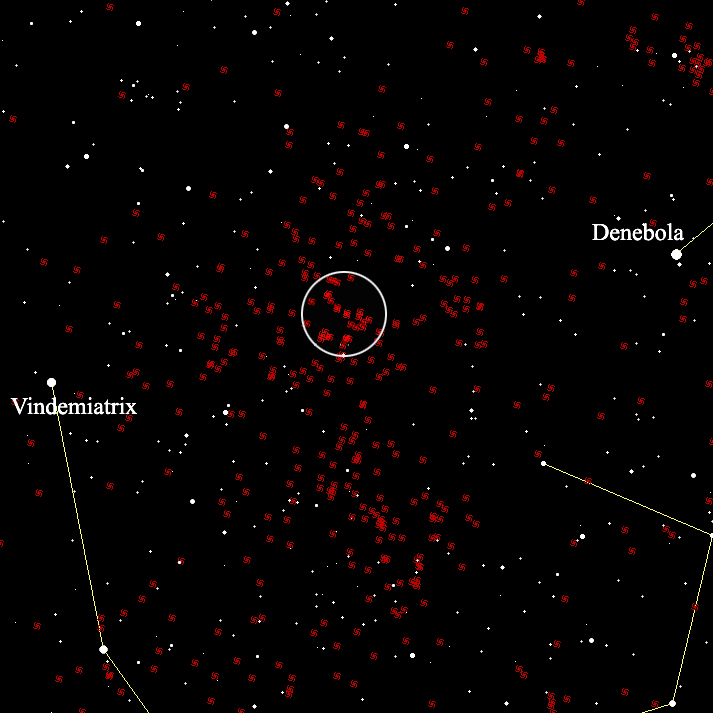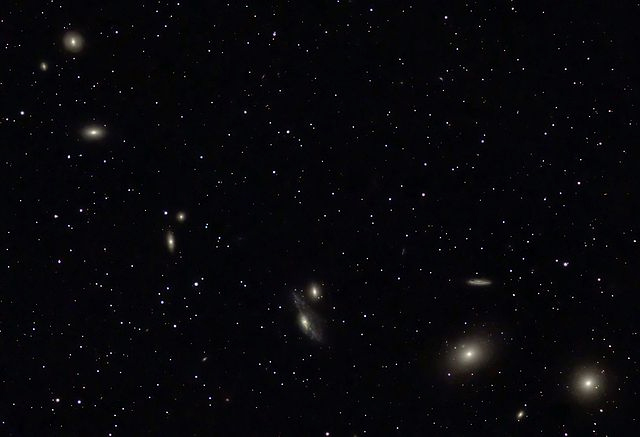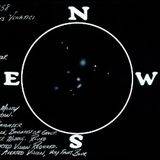
As soon as the wildflowers start blooming in spring, galaxies are also popping up everywhere. As the seasons turn, and the winter Milky Way sets in the west, springtime offers a glimpse into deeper space, before the dusty summer Milky Way rises and blocks our views with its magnificence. Galaxy Season is upon us!
In this springtime space between the Milky Way's arms, that's where the galaxies lie, and the only thing keeping you from seeing even more of them is the size of your optics. We'll visit some famous denizens of an area affectionately called "Downtown Virgo," where you just about can't move your telescope without bumping into a galaxy in your eyepiece.
The first requirement for galaxy hunting - and it is actually necessary - is to get to a reasonably dark sky. This does not mean you need to go to Namibia, or even the Texas Star Party (while that really is a great idea), just some place away from city lights. In my case, half an hour (as the crow flies) from San Jose, California, to Henry Coe State Park is sufficient. Tons of galaxies are visible from that spot. If you were to look at charts showing light pollution, you'd think Henry Coe is unusable. But I've had numerous wonderful nights there. And, you really do not need a huge telescope.
The galaxies in downtown Virgo are bright; I was surprised to see so many using a 4" refractor. In fact, this is one of those rare cases where smaller is better - this part of the sky is so chock full of galaxies that a smaller telescope makes it easier to identify what you're looking at, because the hundreds of dimmer ones do not easily show up. We'll talk about the ones that will be visible. But, if you have an eight or ten inch telescope, be prepared: knowing what is what is not so easy in these crowded fields!
Below is a chart showing some of the highlight objects, which tend to be those that French comet hunter Charles Messier catalogued as "not comets." The red markings highlight galaxies that are magnitude 12 or brighter, all of which should be visible in a small telescope from a dark location.

.
The galaxy fields are generally between the bright stars Arcturus in Bootes, Spica in Virgo, and Denebola (dimmer) in Leo. My favorite area is just less than halfway between the stars Vindemiatrix and Denebola - downtown - where the arrow points.
This part of the sky contains our nearest major galaxy cluster, The Virgo Cluster, averaging a distance of 45 million light year from home. There are literally thousands of members; countless galaxies for amateurs to hunt. Let's take this a step further and look at a truly famous section of the cluster, very close to the center of downtown (M87 - the giant elliptical galaxy is the heart of the cluster).
The chart below highlights galaxies between Vindemiatrix and Denebola, down into Virgo, that are magnitude 16 or brighter; around the limit for most larger amateur telescopes:

.
A portion of the circle above includes Markarian's Chain, pictured below:

.
The section of the Virgo Cluster is called Markarian's Chain is anchored by two giant elliptical galaxies, seen on the right; M84 at the far right and M86 is the next big bright galaxy, the small bright one below them is NGC 4388, just brighter than mag 12. Above is NGC 4402 at mag 12.8. Further along the chain to the left is a pair of galaxies named "The Eyes" - both under mag 12. Up left from the Eyes are two smaller galaxies in the New General Catalog (NGC); the brighter of the two almost mag 12, the dimmer, closer to mag 13. Fortunately, even though they are dim, their "brightness" is all in a very small area, which makes them look brighter than their magnitude indicates! This phenomenon is known as surface brightness. Note that two galaxies of the same magnitude but different sizes may appear to vary in brightness. The smaller galaxy will look much brighter since its magnitude (amount of light) is compressed in a smaller area.
Thanks to this surface brightness, you should see these small dim galaxies in Downtown Virgo as well. The remaining two galaxies in the chain are at upper left, and both in the range of magnitude 11 to 11.5, both members of the NGC.
Markarian's Chain is a showpiece. It is awe-inspiring to view, and I have no doubt your first "find" of this target will be a thrill. It's such a great sight, I even look for it from my suburban skies, hoping to at least see the two bright Messier objects in it, and know what is really there.
Once you've visited downtown Virgo, start sweeping around with your telescope. Take your time, let your eye relax, and conduct slow sweeps. By letting your eyes dark adapt (hopefully in a darkish site over at least half an hour), you'll be amazed at how much you can see. I think you'll come away feeling like in Virgo, its galaxy fields forever!
Clear skies,
Mark Wagner
Sky charts from The Sky by Software Bisque.
Markarian's Chain from Wikipedia Commons, imager: Hewholooks


















